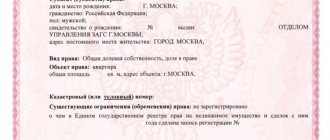Let's try to figure out what legal force a handwritten receipt has, what the consequences of non-compliance with obligations under this document are, and how to force the debtor to pay the debt or provide the promised services.
It is enough to refer to the Civil Code to understand what a receipt is and whether such a document has legal force in court. According to the law, this paper, drawn up in writing, can act as evidence of a transaction. This point is regulated by paragraph 2 of Article 808 of the Civil Code. Thus, the law contains the concept of a receipt and unambiguously answers the following question: in what cases is a handwritten receipt acceptable, does this document have legal force? Such a paper, written by hand, is essentially a loan agreement. It can also act as a service agreement.
Is certification required by a notary?
The following types of receipts can be distinguished : notarized and executed without notarization. The second option raises doubts: is a handwritten receipt not certified by a notary valid, is it different from an uncertified document? We can safely say that both options are legitimate and have a right to exist.
An agreement drawn up by a notary is more reliable. In practice, the debtor often repudiates his obligations under the receipt. In this case, it is easier to prove in court the obligations of the defendant to the plaintiff. In the absence of notarization, the plaintiff can defend his rights in court. But this will require more time and money - there is a need to conduct a handwriting examination.
What is the difference between a promissory note and a cash note?
People who lend money often confuse the concepts of promissory note and cash receipt. But according to the law, the concepts under consideration have equivalent meaning. Although it should be noted that they may differ slightly - much depends on the circumstances under which the money was received and transferred. Therefore, it is necessary to consider everything in more detail.
For example, a receipt may indicate a situation in which funds were simply transferred from one person to another without having to be repaid. Also, a cash receipt may indicate that the money was transferred precisely as repayment of a debt. In this case, the borrower confirms that the funds have been returned and he has no claims against the debtor. As for the promissory note, it may not only be of a monetary nature, but may indicate the transfer of some other value.
To make the definition more accurate, let’s summarize what a cash and promissory note is:
A promissory note is a paper that confirms the very fact of the debt and is an addition to the loan agreement. According to the terms of this document, you can lend not only money, but real estate, securities, and various things.
A cash receipt is a document whose purpose is to transfer money. Moreover, the funds can be transferred both as a loan and as a return (this circumstance simply needs to be stated in the document).
Based on all of the above, a promissory note is an ideal document to confirm a loan, while a cash receipt can be useful to correctly confirm the transfer of funds, but not necessarily a loan.
Rules for drawing up receipts
The person who lends money is interested in the proper fulfillment of debt obligations. Therefore, it is so important to know under what conditions a handwritten receipt has legal force and what the rules are for drawing up this paper. The following points can be identified that need to be taken into account when compiling:
- The one who receives the money or service should write. Handwriting must be legible. If a person subsequently refuses to fulfill his obligations, it will not be difficult to prove his authorship. It will be enough to conduct a handwriting examination.
- The receipt must indicate the full names of the parties. Not indicating this data, writing instead a nickname, aunt, uncle and other options is wrong, this is a way to write a receipt so that it does not have legal force. Thus, it is impossible to count on receiving money through the court if the citizen’s full name is not indicated
- The receipt must contain the debtor's passport details. It is not uncommon for different people to have the same full name. Passport data will help prove the guilt of the debtor even if he has a full namesake. It is not necessary for the lender to provide passport details. The presence of a receipt from the debtor is sufficient evidence for the court.
- It is worth providing contact information and place of residence. This will help the creditor find the debtor, if necessary.
- All aspects of the transaction, conditions for the return of money or the provision of services must be described in detail in the receipt. Such a detailed description will help the parties protect their rights in court if the need arises. It is important to indicate the date of repayment of the debt or provision of the service.
- The receipt should be written carefully, without crossing out. This is due to the fact that possible blots and corrections may cause multiple interpretations of the paper.
- It is important to compare the debtor’s signature with the one in his passport. This precaution will help if it becomes necessary to prove the authenticity of the signature in court.
- It is better to use a ballpoint pen to write this document. Answering the question whether a handwritten receipt has legal force if it is written with a gel pen, capillary pen or other writing instruments, you can answer in the affirmative. However, papers written with such writing instruments are less durable. If a lot of time passes, the text may become unreadable. Then it will be difficult for the plaintiff to prove his position in court.
A correctly drawn up receipt will help the creditor defend his interests in court, and the debtor will not become a victim of fraud.
Regulatory regulation of receipts for receipt of funds
A receipt for the transfer of money is drawn up on the basis of clause 2, art. 808 of the Civil Code of the Russian Federation. It is on the basis of the clause in question in the law that the fact of transfer of money must be confirmed. But there are also several regional documents that regulate the aspect of monetary relations under consideration, which practically do not regulate in any way the form in which the mortgage should be drawn up. In court, almost any form of document containing basic information about the amount and conditions of its transfer, as well as the signatures of the participants in the transaction, was recognized as legal.
In some situations, drawing up a document is not enough - the fact that the transfer and receipt of money were successful must be notarized. The legislation specifies what kind of cases we are talking about. In order to clarify the point in question, the only effective remedy is to seek help from paragraph 2 of Art. 163 Civil Code of the Russian Federation. But you need to take into account that the notary certifies not just a receipt, but a full-fledged loan agreement. The receipt comes with it as an attachment, but is not the main confirmation of the fact of transfer of funds. If there is a mutual agreement between the parties, you can do without the services of a notary regarding the transfer and receipt of money.
Receipt – write or print?
The receipt can be written by hand or printed on a printer. Many people prefer to use this method because they doubt whether a handwritten receipt has legal force and whether it will be possible to subsequently force the debtor to fulfill his obligations. However, if a document is drawn up without certification by a notary, it will be more profitable to write it by hand.
A document printed using technical means will contain only the signature of the debtor. Proving that he signed the printed text can be a difficult task. In the case where the paper is handwritten, an examination can be carried out and the authenticity of the handwriting can be easily confirmed.
Thus, the question of whether a handwritten receipt works can be answered in the affirmative. This option is even more preferable compared to a printed document.
Recommendations and requirements for drawing up
Incorrect drafting of a document leads to legal consequences. That is, in order to be able to make demands on the debtor using a receipt, it must be properly drawn up.
Basic requirements for this document:
- A clear inscription “receipt” located in the middle of the sheet;
- Below on the left side, the locality where it is drawn up or where the place of fulfillment of the obligation is located is indicated (in 90% of cases we observe that sellers simply do not write the place of preparation);
- The line below or opposite the place of preparation, on the right side, indicates the date of preparation of the document - day, month and year;
- Next, the details of the parties and their roles are written down - who transfers money to whom;
- Last name, first name and patronymic (full name) are entered in full, without abbreviations - for example, Petr Vladimirovich Ivanov;
- After the full name, passport data is recorded (series, identification document number, by whom and when it was issued), date, month and year of birth, place of permanent (and temporary) registration;
- Amount of cash loan - the digital designation is duplicated in words;
- The currency in which the loan is provided, other features of the transaction;
- The term for providing money or the date by which the borrower agrees to repay it. And also, if applicable, the conditions under which the amount is not refunded;
- What are the funds transferred for, under what agreement or obligation (if applicable);
- After the text of the receipt, the full name and signature of the person who wrote it is placed. If desired, the lender (in real estate transactions - the buyer) can certify the receipt with his signature.
The presence of witnesses is not the main argument in a lawsuit if the dispute is regarding the conditions specified in the receipt. But they can confirm the very fact of writing such a document, the state of the parties at that moment. In this case, their presence is indicated in the text of the receipt, and the witnesses also sign the document.
For reference! If it can be proven that the receipt was drawn up and signed under physical and/or psychological pressure, it will be considered void.
In what cases can handwritten receipts be made?
It is convenient to draw up an agreement in the form of a receipt. When writing this paper, it is not necessary to spend money on notary services. And drawing up such an agreement takes little time.
Since we have already found out how to draw up a handwritten receipt and whether this paper has legal force, we will consider cases when it is possible to use such an agreement. Not all contracts between citizens can be concluded in this form. For example, purchase and sale agreements for real estate, gift agreements and many others must be certified by a notary. When drawing up such an agreement, it is important to know whether a handwritten receipt has legal force in each specific case. There are cases in which it is permissible to use this document:
- A loan for an amount greater than 10 times the minimum wage. However, the transfer of smaller amounts into debt should also be documented - this way there is a greater chance of getting your money back if necessary.
- Another option is a receipt for delivery of money. For example, in the case of transfer of collateral, it is important to know whether the receipt for receipt of money has legal force, and how to write it correctly.
- It will be relevant to draw up such a document in cases where the parties agree on the provision of services;
- Renting a home is another option for using receipts. In this way, tenants can protect themselves from unscrupulous landlords. In such cases, it is important to understand in what situations it is worth drawing up a receipt for receipt of money and whether each specific document has legal force. In order to ensure the transparency of such financial relations, it is worth documenting in writing all payments for a rented apartment, as well as the payment of a deposit. In such cases, you can safely draw up a document in writing, without doubting whether the receipt has legal force in court, and count on the protection of your rights.
We will answer all your questions and will definitely help! Call us right now on the Hotline (812) 425 31 40 and get legal advice!
Official website of the Supreme Court of the Russian Federation
The borrower drew up receipts in which he promised to repay the debts to the lender, but never did. The lender sued him. The first instance satisfied the request. But the second decision was canceled because the receipt, according to the appeal, does not prove the loan agreement between the parties. The creditor complained to the Supreme Court, which overturned the appeal ruling. The Supreme Court told what mistakes the court made and what you should pay attention to in such disputes.
From 2021 to 2021, Ivan Krupsky* wrote several receipts to Valentin Polonsky* stating that he “obliges to return” the money and interest in a total amount of 8.7 million rubles. But he didn’t pay anything. Polonsky went to court to recover 8.7 million rubles from the debtor. principal debt and 1.6 million rubles. as interest on arrears. The Petrozavodsk City Court of the Republic of Karelia satisfied the creditor's claims in 2021 (case No. 2-217/2019). The court of first instance proceeded from the fact that the receipts that Krupsky issued to Polonsky confirmed the loan agreement.
The defendant did not agree with the court's position and decided to appeal the decision. According to Krupsky, from 2013 to 2021, he, his wife and Polonsky were engaged in business in the real estate sales market. The disputed receipts only recorded the volume of financial obligations in the course of business activities on a specific date. The documents did not confirm the fact of the transfer of money, nor the conclusion of loan agreements between the parties, Krupsky insisted.
The Supreme Court of the Republic of Karelia (No. 33-1989/2019) overturned the decision of the Petrozavodsk court and sided with Krupsky. The appeal concluded that the debtor is obliged to pay the creditor the money, but there is no evidence that Krupsky received it from Polonsky. There is also no reason to assume that 8.7 million rubles. were just a loan.
Polonsky appealed the decision of the second instance to the Supreme Court. The man believed that from the literal interpretation of the words and expressions of the receipt it follows that Krupsky accepted an obligation to return the money within a specific period. Because the word “return” means: to give back something taken, to receive back.
The Supreme Court considered the plaintiff's arguments convincing, canceled the appeal ruling and referred the case for a new trial (ruling No. 75-KG 19-9 of March 3, 2021).
Formulations and consequences
The Supreme Court noticed that the debtor used the wording “I undertake to repay” in the receipt. This clearly says that he took the money. “The appeal did not compare the condition for the return of money with the condition for the payment of interest and the meaning of the transactions themselves,” the cassation court noted. According to the court, all this is typical for a loan agreement. In addition, the Supreme Court noted a violation of Art. 431 Civil Code. This rule instructs courts to take into account the literal meaning of the words and expressions of the contract. But lower authorities ignored this provision of the law.
The Supreme Court referred to Art. 196 of the Code of Civil Procedure and reminded that the courts themselves must determine what legal relations existed between the parties and what law should be applied. The appeal did not side with Polonsky, in particular, since he did not provide evidence of the existence of a loan agreement. But the court was obliged to determine what legal relations existed between the persons and what were the grounds for their occurrence.
“The appeal did not give a legal qualification to the actual legal relations of the parties and did not evaluate the circumstances of the case,” says Marina Kostina, lawyer at the Yakovlev and Partners legal group. Experts note that problems in court often arise due to the ambiguity of the contents of the receipt. “But in this case, it is difficult to agree with the conclusion of the appellate court that the documents do not confirm the fact of the transfer of money and the loan agreement,” says Marina Filippova, lawyer at the National Legal Service AMULEX.
The “moral” of the matter is that it is necessary to correctly formalize mutual rights and obligations. Then controversial situations will arise less often, and if they do, the courts will not have to guess for the parties what they had in mind,” sums up Sergei Vodolagin, managing partner of the Westside law firm.
* Full name changed by the editors.
Alina Winter
Deadlines for handwritten documents
Important! In the case of a simple paper receipt, Russian legislation does not establish a procedure or requirement for certification by a notary. If there are signatures on both sides, the document has legal force and can be used in legal proceedings in a simple written form or a completed handwritten receipt. However, the statute of limitations can only be affected by the content of the requirements specified in the document.
There are certain requirements for the content of the receipt, which must include the following information:
- Data about the lender and borrower
- The size of the transaction that is planned to be concluded: the amount of funds that will be transferred to the borrower and the currency.
The legislation does not provide for a clear format for drawing up an agreement. The main thing is the presence of the points listed above. The receipt should not contain typos or grammatical errors. Otherwise, the document will be declared invalid.
When can the statute of limitations be interrupted?
The ability to collect a debt on a receipt may be interrupted in the event of:
- filing a claim with the judicial authorities;
- if the parties have begun the mediation procedure;
- if the debtor has taken actions confirming the fact of his recognition of the debt.
Then the countdown begins again, and the period that passed before the interruption is not included in the new period. If the application was not considered at the court hearing, then the duration of the period continues to be calculated. If a mediation agreement is signed, the suspension will remain in effect until it is terminated.








